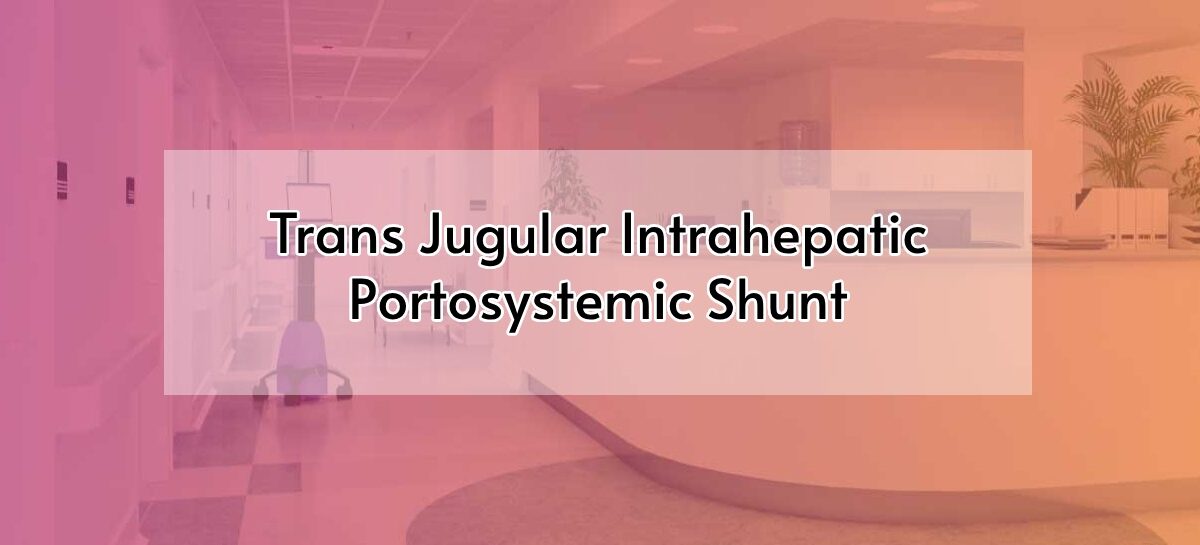A 68-year-old female, known case of diabetes mellitus, systemic hypertension, hypothyroidism, decompensated chronic liver disease with recurrent variceal bleed and status post 3 sessions of endoscopic variceal ligation presented with complaints of light headedness and 1 episode of vomiting with fresh blood clots in vomitus and upper abdominal pain. On examination BP- 100/60 mm Hg; PR – 82/ min. Per abdomen examination showed tenderness in epigastric region. Other systems examination was normal. Patient was shifted for an emergency endoscopy which revealed large oesophageal varices with active bleed and endoscopic variceal ligation was performed. Patient was shifted to ICU for further management and was started on Terlipressin, Vitamin K, antibiotics and other supportive medications. CT abdomen revealed partial to near complete thrombosis of portal vein from confluence involving the whole of main portal vein and extending into right and left portal vein branches, segment V & VIII and adjacent segment VII large wedge shaped transient differential attenuation in portal base- possibly due to portal vein thrombosis. Interventional radiologist opinion was obtained regarding possibility of Trans jugular Intrahepatic Portosystemic Shunt in view of recurrent variceal bleed. Using right IJV access, 10mm x 90 mm stent was placed. Significant reduction in pressure gradient was obtained and rapid antegrade flow was seen in shunt. Suction thrombectomy was done from main portal vein. Post procedure vitals was stable and patient was shifted to ICU for further management. Recheck Angio was done a day after which showed partial thrombosis of stent and stent was cannulated. Patient was started on anticoagulants and was closely monitored for any significant drop in haemoglobin levels which was later stopped in view of 1 episode of haematochezia. Patient was hemodynamically stable with no further drop in haemoglobin and was discharged.

DISCUSSION:
The major complications of cirrhosis include portal hypertension, hepatic encephalopathy, spontaneous bacterial peritonitis, hepatorenal syndrome, hepatopulmonary syndrome and hepatocellular carcinoma.
Portal hypertension results due to increase in the portal resistance and the portal flow. The increase in portal resistance occurs in response to the regenerating nodules and the fibrotic bands. The increase in portal inflow is a part of the hyperdynamic circulatory state that occurs due to collateral vessels that are formed between the high pressure portal venous system and low pressure systemic veins. Splanchnic vasodilation allows increased flow of systemic blood into portal venous system.
The presence of ascites, splenomegaly, oesophageal varices should arouse the suspicion of portal hypertension in patients with cirrhosis. Laboratory investigations can show liver synthetic dysfunction like hypoalbuminemia and hyperbilirubinemia. Thrombocytopenia and leukopenia can occur due to hypersplenism. In severe variceal bleeding there can be features of hypovolaemic shock and renal insufficiency.
Management of portal hypertension includes reducing the portal blood flow using beta blockers or vasopressin; reducing the resistance with drugs like nitrate or creating a portosystemic shunt by radiological or surgical methods.
Patients with portal venous pressure is greater than 12mm Hg are at increased risk of variceal haemorrhage.
Management of variceal haemorrhage includes hemodynamic stabilisation using fluids and blood replacement, using vasoconstrictive agents like Terlipressin , somatostatin or octreotide and balloon tamponade using sengstaken-blakemore tube. The advantage of somatostatin and octreotide over vasopressin is that it causes selective splanchnic vasoconstriction thus lowering the portal pressure without cardiac complications. The sengstaken Blakemore tube has a gastric and oesophageal balloon and an aspirating port in the stomach. The complications of balloon tamponade includes oesophageal rupture, aspiration pneumonia and airway obstruction which can be prevented if the patient is intubated before the procedure.
Trans jugular intrahepatic portosystemic shunt is considered for patients with recurrent variceal bleeding and it can also be used as a bridge for transplantation. This procedure reduces the portal pressure by creating an communication between hepatic vein and intrahepatic branch of portal vein.
In Trans jugular intrahepatic portosystemic shunt a metallic stent is advanced through the hepatic veins into the liver substance so that a direct portocaval shunt is created. A polytetrafluoroethylene coated stent is used which lines the tract in liver parenchyma and draining hepatic vein. This stent also has an uncoated portion that will fix the stent to the portal vein.
The complications of TIPS procedure include shunt occlusion which should be periodically monitored with doppler ultrasound and hepatic encephalopathy.
Portal vein thrombosis occurs in cirrhosis patient due to stasis of blood in the portal venous bed. Intestinal ischemia and necrosis can occur due to the thrombus reaching the mesenteric venous system. But the hepatic blood flow will be maintained because of the collaterals around the obstructed portal vein segment. Treatment options for portal vein thrombosis are anticoagulation and TIPS.



 Dr.Madhumitha.R.M
Dr.Madhumitha.R.M Dr. Jayaraman
Dr. Jayaraman